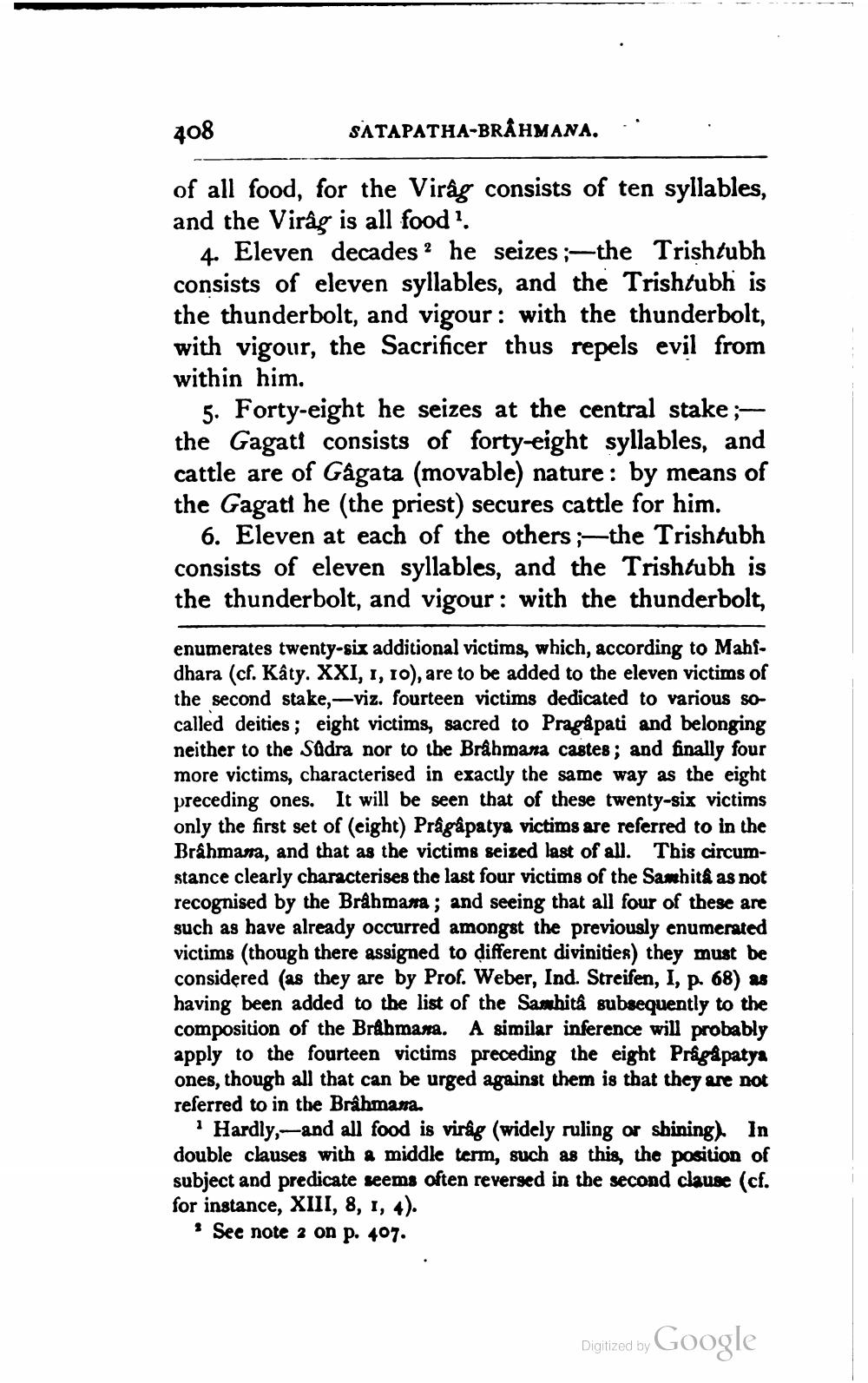________________
SATAPATHA-BRAHMANA.
408
of all food, for the Virâg consists of ten syllables, and the Virag is all food'.
4. Eleven decades he seizes;-the Trish/ubh consists of eleven syllables, and the Trish/ubh is the thunderbolt, and vigour: with the thunderbolt, with vigour, the Sacrificer thus repels evil from within him.
5. Forty-eight he seizes at the central stake;the Gagati consists of forty-eight syllables, and cattle are of Gågata (movable) nature: by means of the Gagatt he (the priest) secures cattle for him.
6. Eleven at each of the others;-the Trishtubh consists of eleven syllables, and the Trishtubh is the thunderbolt, and vigour: with the thunderbolt,
enumerates twenty-six additional victims, which, according to Mahidhara (cf. Kâty. XXI, 1, 10), are to be added to the eleven victims of the second stake,-viz. fourteen victims dedicated to various socalled deities; eight victims, sacred to Pragâpati and belonging neither to the Sûdra nor to the Brahmana castes; and finally four more victims, characterised in exactly the same way as the eight preceding ones. It will be seen that of these twenty-six victims only the first set of (eight) Prâgâpatya victims are referred to in the Brahmana, and that as the victims seized last of all. This circumstance clearly characterises the last four victims of the Samhitâ as not recognised by the Brahmana; and seeing that all four of these are such as have already occurred amongst the previously enumerated victims (though there assigned to different divinities) they must be considered (as they are by Prof. Weber, Ind. Streifen, I, p. 68) as having been added to the list of the Samhitâ subsequently to the composition of the Brahmana. A similar inference will probably apply to the fourteen victims preceding the eight Prâgâpatya ones, though all that can be urged against them is that they are not referred to in the Brahmana.
'Hardly, and all food is virág (widely ruling or shining). In double clauses with a middle term, such as this, the position of subject and predicate seems often reversed in the second clause (cf. for instance, XIII, 8, 1, 4).
* See note 2 on p. 407.
Digitized by
Google




